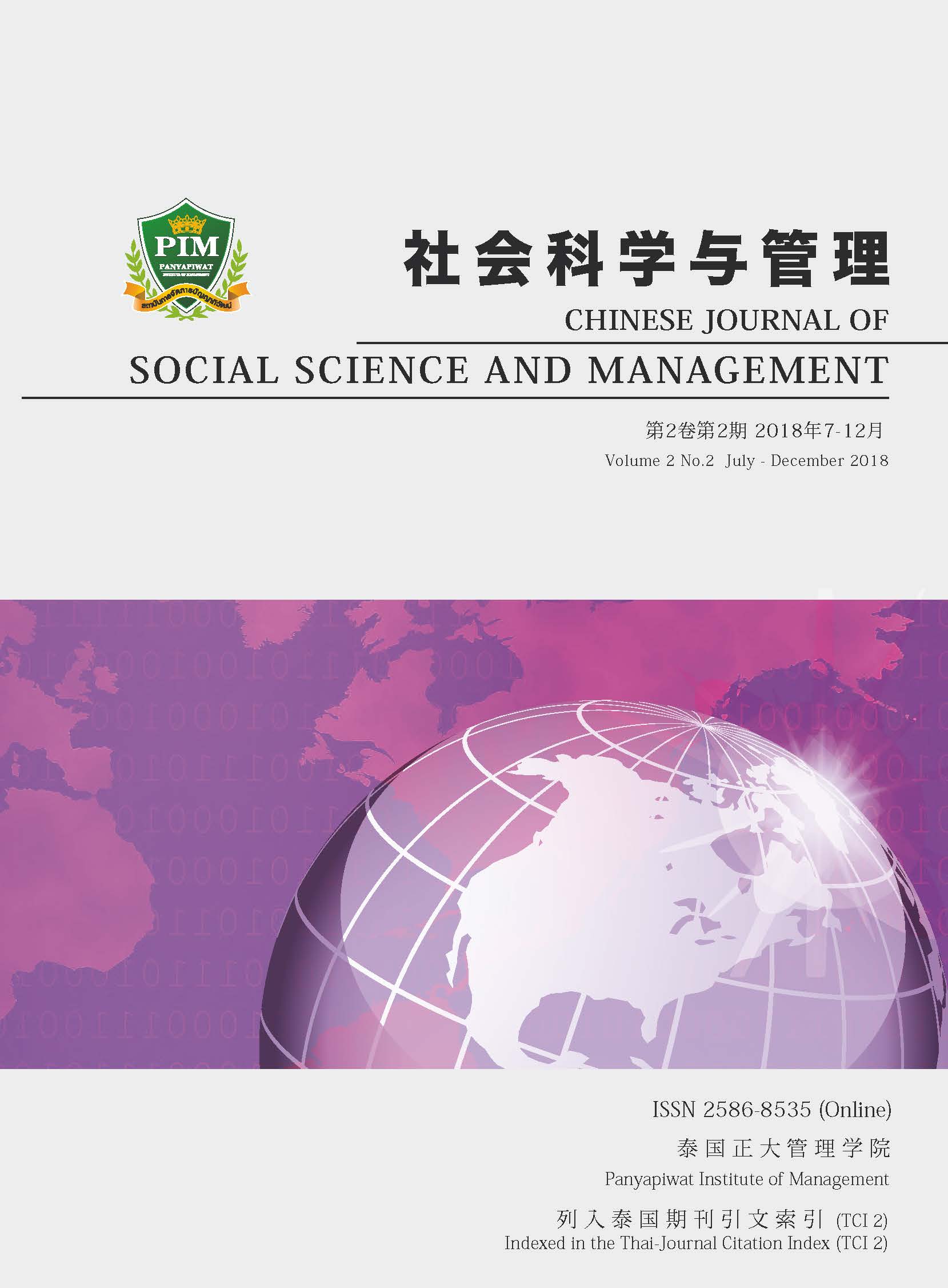RESEARCH ON THE RELATIONSHIP BETWEEN OWNERSHIP STRUCTURE AND CORPORATE PERFORMANCE OF CHINESE GROWTH ENTERPRISE MARKET LISTED COMPANIES BASED ON THE MEDIATING EFFECT OF GOVERNANCE BEHAVIOR
Main Article Content
Abstract
In order to study the relationship between ownership structure and company performance under
the special circumstances of Chinese GEM listed companies, and to explain the contradictory research
results between the past literature ownership structure and company performance, this paper is different
from the traditional research path from structure to performance. Drawing on the research paradigm of
structural behavioral performance of industrial economics (SCP paradigm), the paper analyzes the panel
data of Chinese GEM listed companies from 2010 to 2015 by using the longitudinal method. The study
found that based on the SCP paradigm, the relationship between ownership structure and company
performance is not simple and direct. It is transmitted between the two through governance behavior.
Governance behavior plays a partial intermediary role between governance structure and governance
performance. Research has made a little exploratory research to open the structure to the “black box” of
performance enriching the application of corporate governance theory.
Article Details
Chinese Journal of Social Science and Management Editorial Division
The Office of Research and Development, Panyapiwat Institute of Management
85/1 Moo 2, Chaengwattana Rd., Bang Talat, Pakkred, Nonthaburi 11120, Thailand
Tel. 02 855 01048 E-mail: cjssm@pim.ac.th
References
Chongen, B., Qiao, L., Zhou, L., Min, S. & Junxi, Z. (2005). An empirical study on chinese listed firms’ corporate governance. Economic Research Journal, 2, 81-91. [in Chinese]
Dalziel, T., Gentry, R. J. & Bowerman, M. (2011). An integrated agency-resource dependence view of the influence of directors’ human and relational capital on firms’ R&D spending. Journal of Management Studies, 48(6), 1217-1242.
Demsetz, H. (1983). The structure of ownership and the theory of the firm. The Journal of Law and Economics, 26(2), 375-390.
Demsetz, H. & Lehn, K. (1985). The structure of corporate ownership: Causes and consequences. Journal of political economy, 93(6), 1155-1177.
Dongshui, S. (2015). Industrial economics. Beijing: Higher education press. [in Chinese]
Finegold, D., Benson, G. S. & Hecht, D. (2007). Corporate boards and company performance: Review of research in light of recent reforms. Corporate Governance: an international review, 15(5), 865-878.
Forbes, D. P. & Milliken, F. J. (1999). Cognition and corporate governance: Understanding boards of directors as strategic decision-making groups. Academy of management review, 24(3), 489-505.
Garg, S. (2013). Venture boards: distinctive monitoring and implications for firm performance. Academy of Management Review, 1(38), 90-108.
Holderness, C. G. & Sheehan, D. P. (1988). The role of majority shareholders in publicly held corporations: An exploratory analysis. Journal of financial economics, 20, 317-346.
Huse, M., Hoskisson, R., Zattoni, A. & Viganò, R. (2011). New perspectives on board research: changing the research agenda. Journal of Management & Governance, 15(1), 5-28.
Judge, W. Q. Jr. & Zeithaml, C. P. (1992). Institutional and strategic choice perspectives on board involvement in the strategic decision process. Academy of management Journal, 35(4), 766-794.
Kim, B., Burns, M. L. & Prescott, J. E. (2009). The strategic role of the board: the impact of board structure on top management team strategic action capability. Corporate Governance An International Review, 17(6), 728-743.
Lin, Z. (2014). A study on the determinants of board governance performance of GEM listed companies. Doctor, ShanDong University, Jinan. [in Chinese]
Liping, X., Yu, X. & Gongmeng, C. (2006). Ownership concentration, outside blockholders, and operating performance: Evidence from china’s listed companies. Economic Research Journal, 1, 90-100. [in Chinese]
Mei, F. & Dandan. S. (2014). Study on the influence of listing corporation factors of earnings quality GEM: Based on the perspective of corporate governance structure. Soft Science, 8, 137-140. [in Chinese]
Pedersen, T. & Thomsen, S. (1999). Business systems and corporate governance. International Studies of Management & Organization, 29(2), 43-59.
Xiaobo, Z. & Xiaohui, W. (2012). Governance activities of venture capital and performance of new venture enterprise: A mediating model and discussion. R&D Management, 2, 67-78. [in Chinese]
Xiaowei, W. & Fengbo, C. (2014). Ownership structure and enterprises’ value of growth enterprise market listed companies. Journal of Management Science, 6, 40-52. [in Chinese]
Yongxiang, S. & Zuhui, H. (1999). Equity structure and performance of listed companies. Economic research journal, 12, 23-30. [in Chinese]
Yongzhen, X., Lin, Z. & Weizhu. W. (2013). Governance behavior and governance performance: the concept, conduction mechanism and appraisal. Journal of Shandong University (Philosophy and Social Sciences), 6, 80-94. [in Chinese]
Zahra, S. A. & Pearce, J. A. (1989). Boards of directors and corporate financial performance: A review and integrative model. Journal of management, 15(2), 291-334.
Zhonglin, W., Lei, Z., Jietai, H. & Hongyun. L. (2004). Testing and application of the mediating effects. Acta Psychologica Sinica, 5, 614-620. [in Chinese]


